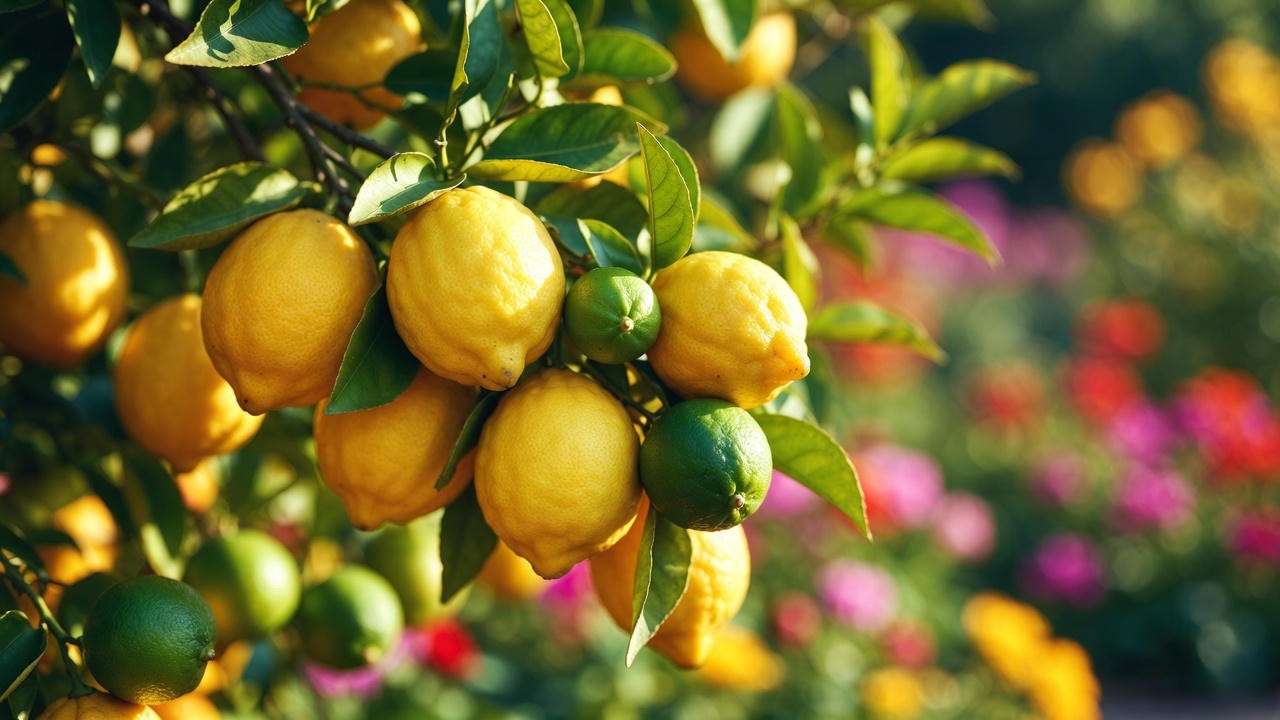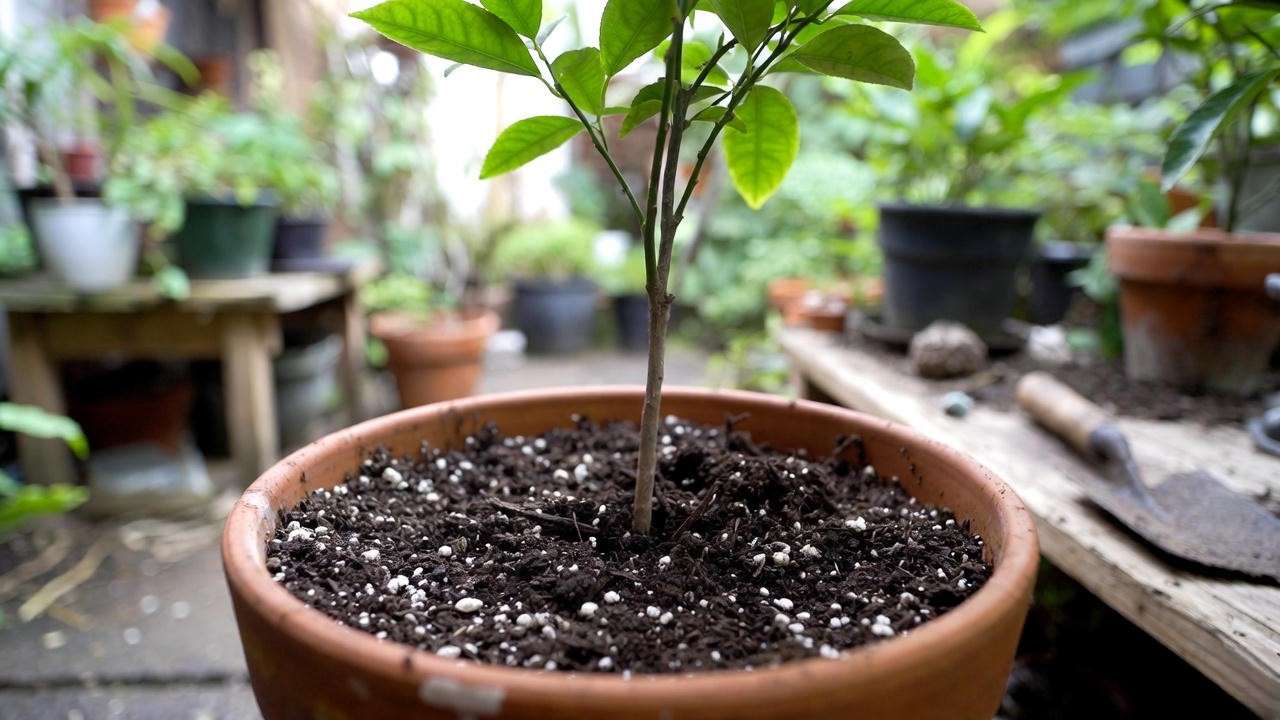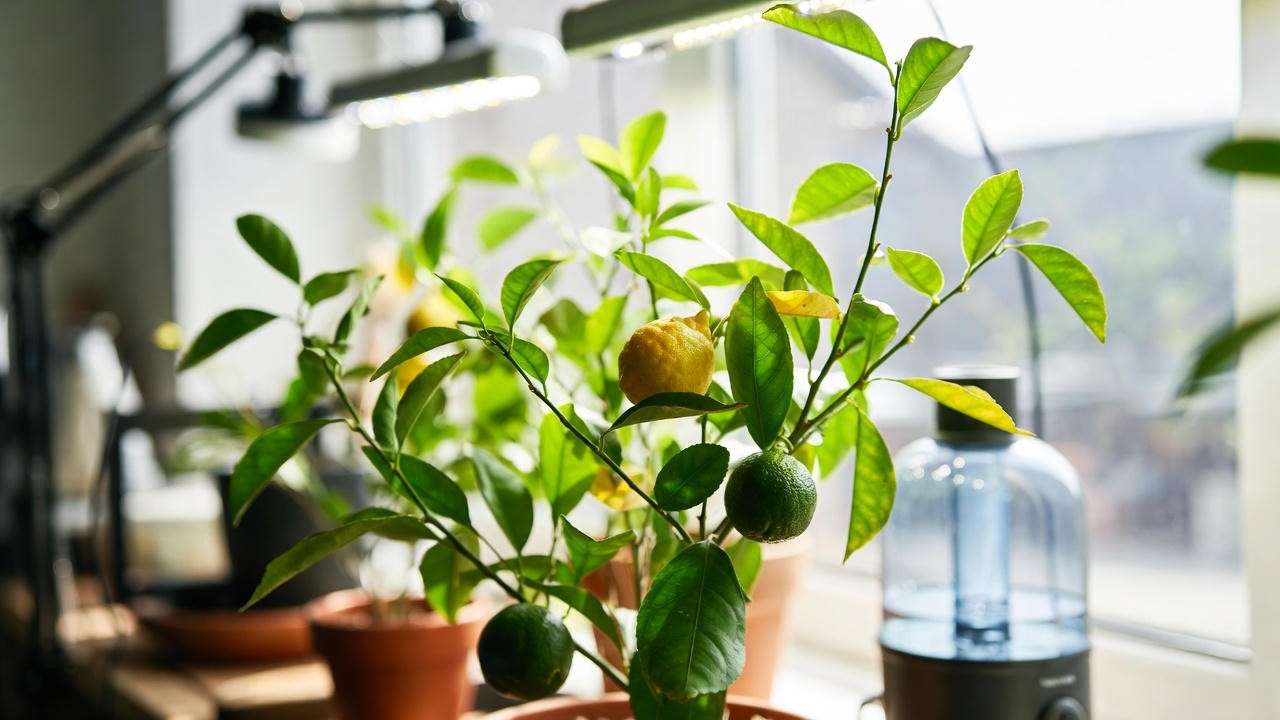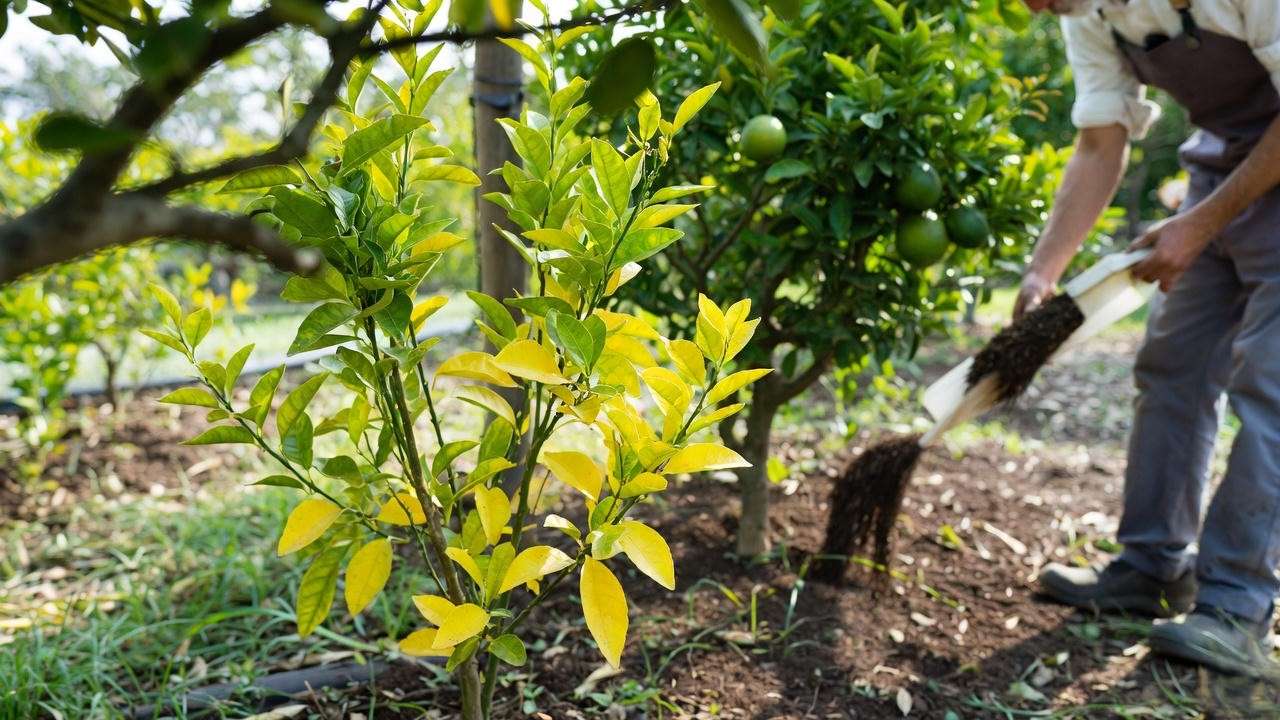Picture this: you step into your sun-dappled backyard, the air scented with the zesty tang of fresh citrus. With a gentle tug, you pluck a ripe lemon and a juicy lime from your very own lemon lime citrus tree — a vibrant, fruit-laden gem that’s both a gardener’s pride and a chef’s delight! 🍋🌿 Growing a lemon lime citrus tree, a hybrid marvel that yields both lemons and limes, is a rewarding journey, but it demands specific care to thrive. Whether you’re a seasoned gardener or a curious newbie, this guide delivers 7 expert tips to ensure your tree bursts with health, beauty, and bountiful fruit. Backed by horticultural expertise and practical insights, we’ll help you transform your space into a citrus paradise. Ready to dig in? 🌴
What Is a Lemon Lime Citrus Tree? 🍋🌴
Understanding the Lemon Lime Hybrid
A lemon lime citrus tree is a horticultural wonder, often a grafted hybrid that produces both lemons and limes on a single plant. Known as a “cocktail tree” in some circles, this compact, evergreen beauty is perfect for home gardens, patios, or even indoor spaces. Popular combinations include Meyer lemon paired with key lime, creating a tree that’s as practical as it is picturesque. Its glossy green leaves, fragrant blossoms, and dual fruit production make it a favorite among gardeners seeking versatility and charm. 🌸

Benefits of Growing a Lemon Lime Citrus Tree
Why choose this citrus hybrid? For starters, it delivers fresh, organic citrus right at your doorstep, perfect for zesty salads, refreshing drinks, or homemade desserts. 🥗 Its compact size suits small spaces, while its evergreen foliage adds year-round beauty to landscapes. In warm climates, it can produce fruit multiple times a year, and its blossoms attract pollinators like bees, supporting local ecosystems. 🐝 Plus, there’s something deeply satisfying about nurturing a tree that rewards you with tangy, homegrown goodness.
Why Proper Care Matters for Your Lemon Lime Citrus Tree 🌿
Caring for a lemon lime citrus tree isn’t just about watering and waiting — it’s about understanding its unique needs to unlock its full potential. Without proper care, your tree may face challenges like pests, nutrient deficiencies, or poor fruit yield. But with the right approach, you’ll enjoy a healthier tree, juicier fruits, and lower maintenance costs over time. “Consistency is key,” says Dr. Emily Carter, a citrus horticulturist with over 20 years of experience. “A well-cared-for citrus tree can thrive for decades, becoming a legacy in your garden.” Let’s dive into the 7 expert tips to make that happen. 🌟
7 Expert Tips to Grow a Thriving Lemon Lime Citrus Tree 🌱
Tip 1: Choose the Right Location ☀️
Sunlight is the lifeblood of your lemon lime citrus tree. Aim for 6–8 hours of direct sunlight daily to fuel photosynthesis and fruit production. In USDA zones 9–11, these trees flourish outdoors year-round, but gardeners in cooler regions can grow them in containers or greenhouses. Choose a spot sheltered from strong winds, as citrus trees have delicate branches. For potted trees, mobility is a bonus — move them indoors during winter or to optimize sunlight exposure. Pro tip: South-facing locations are ideal for maximum sun. 🌞
Tip 2: Plant in Well-Draining Soil 🏞️
Citrus trees despise soggy roots, so well-draining soil is non-negotiable. Opt for loose, loamy soil with a pH between 5.5 and 6.5, which supports nutrient uptake. Test your soil with a DIY kit (available at garden centers) and amend it with organic matter like compost or aged manure if needed. For container gardening, use a high-quality potting mix designed for citrus or create your own by blending peat moss, perlite, and sand. Good drainage ensures your tree’s roots stay healthy and happy. 🌱

Tip 3: Water Wisely 💧
Watering is where many gardeners stumble. Lemon lime citrus trees need deep watering 1–2 times per week, depending on weather and soil type. In hot, dry climates, you may need to water more frequently, while cooler or rainy periods call for less. Check the top 2 inches of soil — if it’s dry, it’s time to water. Overwatering leads to yellow leaves and root rot, while underwatering causes dry, curling leaves. A moisture meter can take the guesswork out of watering, ensuring precision. 💦
Tip 4: Fertilize for Optimal Growth 🌼
To produce lush foliage and abundant fruit, your tree needs a steady supply of nutrients. Use a citrus-specific fertilizer with balanced nitrogen, phosphorus, and potassium (NPK), plus micronutrients like magnesium and zinc. Apply fertilizer monthly during the growing season (spring and summer), switching to a slow-release formula for convenience. Organic gardeners can opt for compost tea or fish emulsion for eco-friendly nutrition. Avoid over-fertilizing, as it can burn roots and reduce fruit quality. A well-fed tree is a fruitful tree! 🍋
Tip 5: Prune for Health and Productivity ✂️
Pruning shapes your tree, boosts airflow, and enhances fruit production. The best time to prune is late winter or early spring, before new growth begins. Use clean, sharp pruning shears to remove dead or damaged branches, thin crowded areas, and maintain a balanced shape. Focus on opening the canopy to let sunlight penetrate, which reduces disease risk. “Pruning is like giving your tree a haircut,” says arborist Tom Nguyen. “It’s about health, not just aesthetics.” Sanitize tools between cuts to prevent disease spread. 🌿

Tip 6: Protect Against Pests and Diseases 🐞
Lemon lime citrus trees can attract pests like aphids, citrus leaf miners, and scale insects, while diseases such as citrus greening or powdery mildew pose serious threats. Prevention is key: inspect leaves regularly, maintain good sanitation, and avoid overhead watering. For pest control, apply neem oil or introduce beneficial insects like ladybugs. If diseases appear, consult your local extension service for diagnosis and treatment. Integrated Pest Management (IPM) combines organic and targeted methods for sustainable care, keeping your tree thriving. 🌱
Tip 7: Support Fruit Production 🍋🌿
A bountiful harvest starts with pollination and care. Outdoors, bees and other pollinators do the heavy lifting, but indoor trees may need hand-pollination using a small brush to transfer pollen between flowers. Once fruit sets, thin excess fruit to improve size and quality — aim for one fruit per 6–8 inches of branch. Harvest when fruits are fully colored and slightly soft, typically 6–9 months after flowering. Regular care ensures your tree delivers a steady supply of tangy lemons and limes. 🍹
Special Considerations for Lemon Lime Citrus Trees 🌴
Growing in Containers 🪴
Containers are a game-changer for gardeners with limited space or colder climates. Choose a 15–20-gallon pot with drainage holes to accommodate a mature tree’s roots. Repot every 2–3 years to refresh soil and prevent root-binding. In winter, move potted trees indoors or cover them during frost, maintaining temperatures above 40°F. Containers offer flexibility but require diligent care to mimic natural conditions. A healthy potted tree can be just as productive as one in the ground. 🏡
Indoor Citrus Tree Care 🏠
Growing a lemon lime citrus tree indoors is entirely possible with the right setup. Provide 12–16 hours of bright light daily, supplementing with grow lights if natural sunlight is limited. Maintain humidity by misting leaves or using a humidifier, as citrus trees crave tropical conditions. Dwarf varieties, like dwarf Meyer lemon hybrids, are ideal for apartments or small spaces. Monitor for pests and ensure good airflow to prevent mold. With care, your indoor tree will brighten your home and your plate. 🌞

Seasonal Care Calendar 📅
- Spring: Fertilize, prune, and scout for pests as growth resumes.
- Summer: Water consistently, thin fruit, and apply mulch to retain moisture.
- Fall: Reduce watering and prepare for indoor transitions in cooler climates.
- Winter: Protect from frost, limit fertilization, and monitor indoor trees for light and humidity.
Troubleshooting Common Lemon Lime Citrus Tree Problems ⚠️
Even with the best care, issues can arise. Here’s how to tackle common problems:
- Yellowing leaves: Often caused by nutrient deficiencies (add citrus fertilizer) or overwatering (check drainage).
- No fruit production: Ensure proper pollination, reduce stress, and review pruning practices.
- Dropping fruit: Address inconsistent watering or pest infestations promptly.
Troubleshooting Table
| Symptom | Possible Cause | Solution |
|---|---|---|
| Yellow leaves | Overwatering, nutrient deficiency | Improve drainage, apply fertilizer |
| No fruit | Poor pollination, stress | Hand-pollinate, reduce stressors |
| Dropping fruit | Watering issues, pests | Stabilize watering, apply neem oil |
| Curling leaves | Underwatering, aphids | Increase water, use insecticidal soap |
Expert Insights: Maximizing Your Tree’s Potential 🌟
To elevate your lemon lime citrus tree care, we tapped into the wisdom of seasoned growers and cutting-edge research. “Flavor starts with care,” says Maria Lopez, a third-generation citrus farmer in Florida. “Healthy trees produce fruit with unmatched zest and juice.” Her top tip? Mulch around the base with organic materials like wood chips to retain moisture and regulate soil temperature. Research from the University of California’s Agriculture and Natural Resources division emphasizes balanced fertilization, noting that micronutrients like zinc and magnesium are critical for fruit quality. For eco-conscious gardeners, consider sustainable practices like rainwater harvesting or companion planting with marigolds to deter pests. These strategies not only boost your tree’s health but also align with environmentally friendly gardening principles. 🌍
FAQs About Lemon Lime Citrus Tree Care ❓
Q1: How long does it take for a lemon lime citrus tree to bear fruit?
A: Typically 1–3 years, depending on the tree’s age at purchase and care quality. Young trees may take longer, while established ones fruit sooner with proper conditions. 🍋
Q2: Can I grow a lemon lime citrus tree indoors year-round?
A: Absolutely! With 12–16 hours of bright light (natural or grow lights), adequate humidity, and regular care, indoor trees thrive. Dwarf varieties are especially suited for year-round indoor growing. 🏠
Q3: What’s the best fertilizer for my citrus tree?
A: Choose a citrus-specific fertilizer with balanced NPK (e.g., 10-10-10) and micronutrients like magnesium and zinc. Organic options like fish emulsion work well for sustainable gardening. 🌿
Q4: How do I protect my tree from frost?
A: Use frost blankets, move potted trees indoors, or wrap trunks with burlap. For in-ground trees, stringing holiday lights around branches can provide gentle warmth during cold snaps. ❄️
Q5: Why are my tree’s leaves curling?
A: Curling leaves often signal underwatering, pests like aphids, or nutrient deficiencies. Check soil moisture, inspect for insects, and apply fertilizer if needed. Our troubleshooting table above can guide you. 🐞
Conclusion: Grow Your Dream Lemon Lime Citrus Tree Today! 🌈
Growing a lemon lime citrus tree is more than a gardening project — it’s a journey to fresh, homegrown citrus and a greener, more vibrant home. By following these 7 expert tips — from choosing the perfect sun-soaked spot to mastering pruning and pest control — you’ll set your tree up for success. Whether you’re nurturing a potted dwarf tree on your balcony or tending a backyard orchard, the rewards are endless: juicy lemons and limes, fragrant blossoms, and the pride of cultivating your own food. 🍋🌴
Start applying these tips today, and don’t be afraid to experiment as you learn your tree’s unique needs. Share your progress in the comments below — we’d love to hear about your citrus-growing adventures! 📝 For more guidance, explore our related articles on citrus pruning, organic pest control, and container gardening. With a little love and care, your lemon lime citrus tree will thrive for years, delivering zesty joy to your home and table. Happy gardening! 🌞














